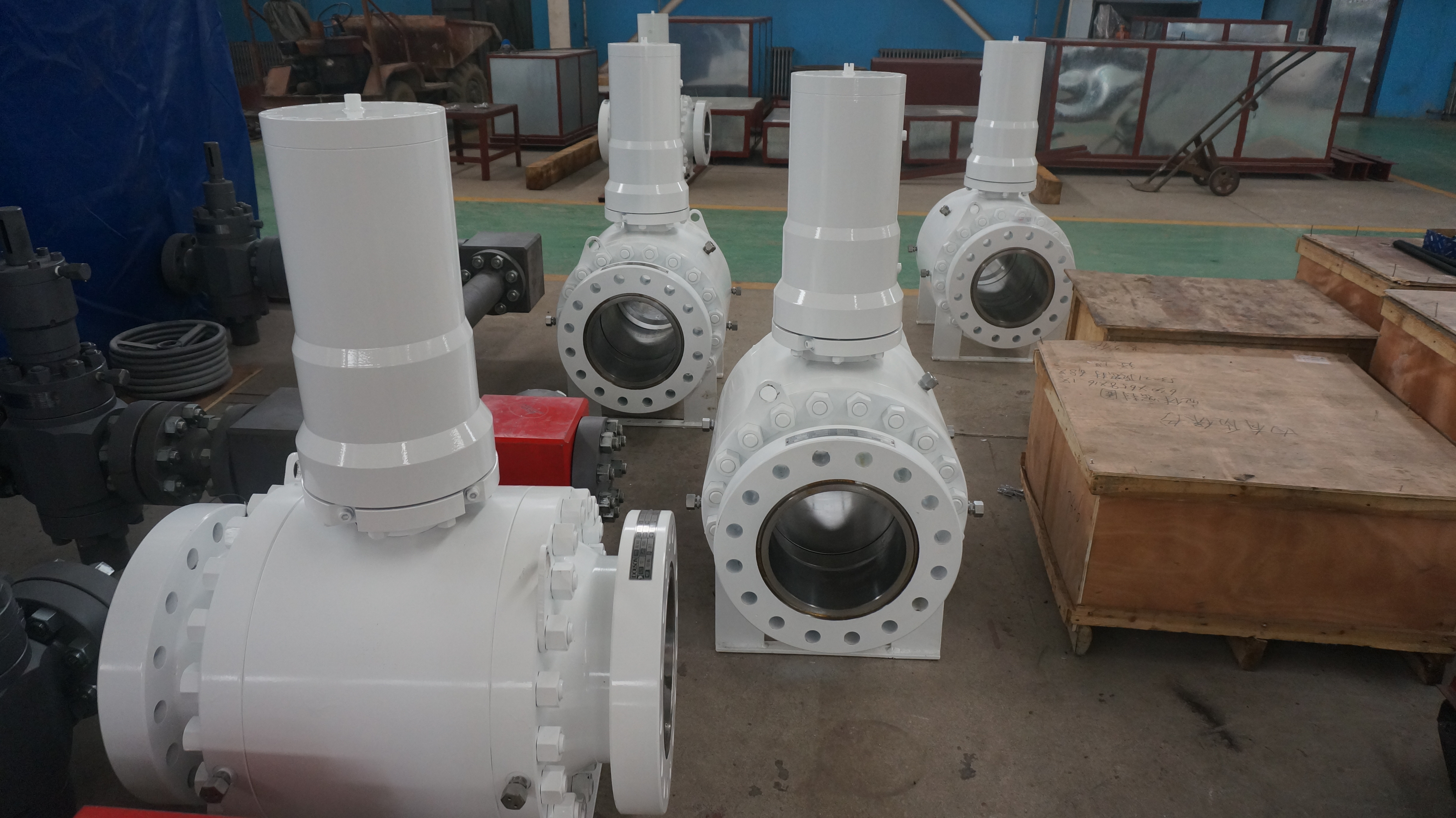Description
API 6D Production Description:
Fengliang petroleum brand hydraulic diverter-p.html target='_blank'>ball valve is a type of valve used in hydraulic systems to control the flow of fluid. It employs a ball with a hole or bore through the center that can be rotated to open or close the valve. When the ball is rotated 90 degrees, the bore aligns with the flow path, allowing fluid to pass through. When the ball is in the closed position, the bore is perpendicular to the flow path, blocking the fluid.
Here are some key features and components of a hydraulic ball valve:
1. Body: The body is the main outer casing of the valve, typically made of metal such as brass, stainless steel, or carbon steel. It provides the primary structure and houses the internal components.
2. Ball: The ball is a spherical component with a hole or bore through its center. It is usually made of metal, such as brass, stainless steel, or chrome-plated steel. The ball rotates within the valve body to control the flow.
3. Stem: The stem is a rod that connects the ball to the actuator or handle. When the stem is rotated, it moves the ball, opening or closing the valve.
4. Seats: Seats are sealing surfaces located inside the valve body against which the ball makes contact when in the closed position. The seats ensure a tight seal and prevent leakage when the valve is closed.
5. Actuator or Handle: The actuator or handle is the mechanism used to rotate the ball. It can be a lever, handwheel, or an automated actuator, depending on the specific application and requirements.
6. Seals: Seals, such as O-rings or gaskets, are used to provide a reliable seal between the ball and the valve body. They prevent leakage around the stem and between the ball and seats.
Hydraulic ball valves are commonly used in hydraulic systems, which involve the control and transmission of fluid power. They are used to regulate the flow of hydraulic fluids, such as oil, in various applications like industrial machinery, construction equipment, power generation, and hydraulic systems in vehicles.
Hydraulic ball valves offer advantages such as quick opening and closing, low fluid resistance when fully open, and the ability to handle high pressures and temperatures. They are available in different sizes, pressure ratings, and materials to suit specific hydraulic system requirements.
Technical Parameters:
Nominal pipeline size:2~48 inch
Nominal pressure: 150~2500LB
Temperature range:-46~250 Deg.C
Fluid: Water, oil, steam and other kinds of fluid
Body material: Material as specified in ASME B16.34
Testing Standard: API 6D/6A
Operator: Lever/Wrench,gear,Motor actuator, pneumatic actuator,hydraulic actuator etc.
Table 1 Recommended torque for flange connection bolting
| Bolt Size | Torque (N.M) | Bolt Size | Torque (N.M) |
| 1/2-13UNC | 50~60 | 1-1/4 -8UN | 850~1000 |
| 9/16-12 UNC | 70~80 | 1-3/8-8 UN | 1100~1300 |
| 5/8-11 UNC | 100~130 | 1-1/2-8 UN | 1400~1800 |
| 3/4-10 UNC | 160~210 | 1-5/8-8 UN | 1800~2200 |
| 7/8-9 UNC | 280~330 | 1-3/4-8 UN | 2200~2600 |
| 1-8 UNC | 420~500 | 1-7/8-8 UN | 2800~3300 |
| 1-1/8-8 UN | 500~600 | 2-8 UN | 3500~4200 |






